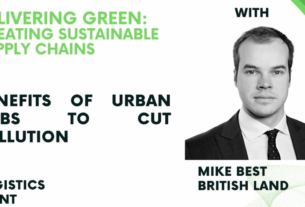Organisations of all sizes are still trying to understand what the ‘new normal’ after Covid means. But this upcoming Peak Season is hopefully going to bring some answers. However, a look at the USA’s market paints a confusing picture. Although not in recession, consumers are feeling less secure. We spoke to Nicole Ostertag of G3 Enterprises about the Peak Season and what will happen in the US market.
Nicole, how would you evaluate the coming Peak Season in America right now?
Assessing the upcoming Peak Season in America right now is a bit of a unique scenario, especially after the settling of shipping patterns post-pandemic. We’re still navigating what this ‘new normal’ looks like. There’s a sense of a lighter load compared to previous seasons. In the US there’s a sentiment among consumers hinting at economic uncertainty, impacting their spending habits. It’s like a bit of a back and forth between spending on goods versus services. We’re in a phase of finding a balance between the two.
This shift is reflected in volume numbers, where railroads, for instance, aren’t implementing intermodal surcharges during the typically high-volume months of October to December. This absence of surcharges is quite unique and suggests that the expected high volumes might not be as significant as in previous years. There might be a slight increase in supply due to some railroad investments, but it’s not surpassing the existing demand.
Can we expect growth for next year based on this?
The trucking industry is currently facing what we refer to as a trough, especially from a rate perspective. We’ve been in this phase since about June, which has prompted challenges due to increased costs in various areas of trucking, such as driver expenses, insurance, and technological investments to meet new regulations. This phase has led some smaller brokers or owner operators to reconsider their involvement in trucking due to its current lack of profitability. As a result, the supply is decreasing. Looking ahead, I foresee a slow Q1 as usual, followed by potential tightening in logistics around spring, possibly by April, when companies typically recalibrate expectations for the year.
What are retailers looking at and expecting?
Retailers are facing challenges in Q4, typically their peak period. Many are encountering declines.
What can all parties do to weather the storm and be better prepared?
For customers and shippers, now’s the time to dive deep into analytics, assessing available tools and forecasting methods to optimise supply chain networks. After the holidays, the focus should shift to resizing networks during slower periods for better cost efficiency. On the logistics provider side, fostering partnerships becomes pivotal. While the spot market has been fluctuating, the focus should be on securing long-term deals beneficial to both parties. Prioritising stability over the spot market might be more advantageous for suppliers at present.
And how easy and valuable is it for logistics companies to really focus on partnerships: even with competitors?
Yes, definitely. Our consistent business relationships have been a significant advantage. Having committed customers who trust us allows for more flexibility and decisions that prioritise long-term benefits over short-term gains.
These strong enable us to invest in technology and mitigate risks. While some suppliers experienced a decline in business recently, our long-term business relationships kept us steady, even during downturns in our customers’ businesses.
Can you describe what the transformed, better logistics business should look like?
Describing an ideal logistics business is quite nuanced and depends on various factors like your business setup and scale. Whether you’re operating locally or globally plays a role in shaping this. However, what I believe could be highly beneficial is having a supplier offering integrated solutions. With such information,
the team can analyse your business comprehensively, leveraging their expertise across different areas to provide valuable advice. Relying solely on individual suppliers limits the scope of insight they can offer, placing the onus on you to have internal expertise, which might be challenging to cultivate. Ultimately, having access to data is crucial, and if it’s not readily available within your business, seeking assistance externally or through technology could bridge that gap effectively. ✷



